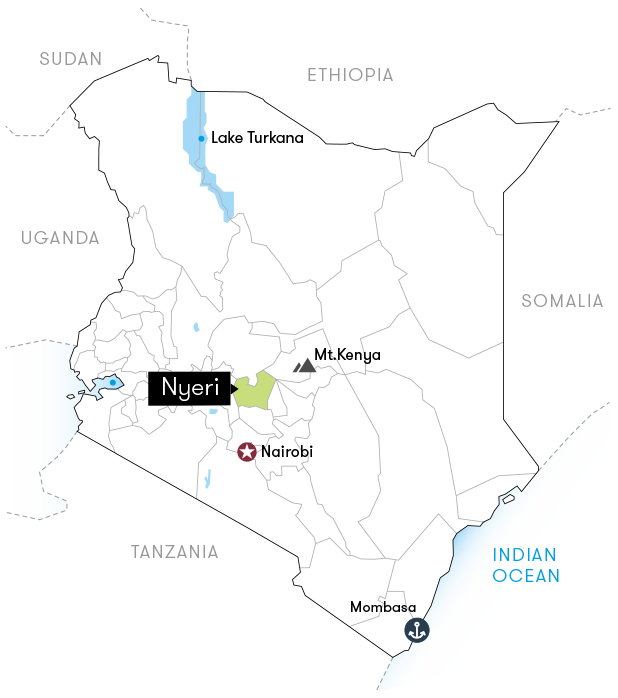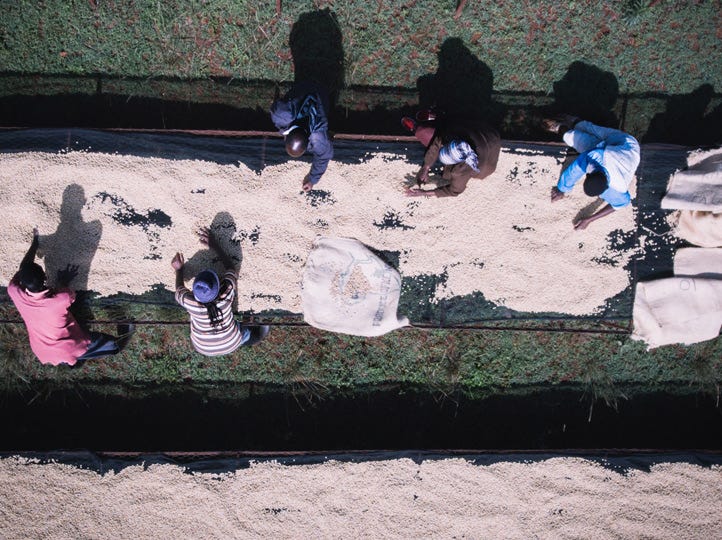The Process
This lot is naturally processed on raised African beds. Ripe cherries are floated to separate by density and then dried slowly in the sun on raised beds. The cherries are carefully turned throughout to ensure consistent drying and avoid over-fermentation or mould formation.
History of Coffee in Kenya
It seems likely that coffee grew wild within the region that would become Kenya, buried deep inside impenetrable forests, or perhaps hiding in plain sight, but it wasn’t until 1895 that missionaries, both protestant and catholic, attempted to grow coffee for commercial purposes. The 100 seeds from Reunion Island that would serve as progenitors to the Kenyan coffee industry arrived on a train, carried by priests belonging to an order known as “Holy Ghost Fathers.” On August 12th, 1899, they arrived at the spot that would quickly become the country’s capital city. One of the early protestant medical missionaries was Dr. Henry Scott. After his death in 1911, a new hospital complex was named after Dr. Scott, and when the department of agriculture took over the complex in 1923 they kept the name: Scott Agricultural Laboratories, or “Scott Labs.” This is the origin of the “SL” in SL28 and other coffee varieties selected at the lab.








